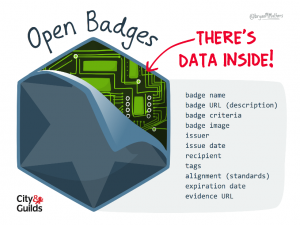ATD Blog
Addressing the Skills Gap With Micro-Credentialing
Wed Nov 06 2019

Recognizing Your Brilliance
As the skills gap in our workplaces increases, more organizations need to rapidly contend with the problem. Essential technical and software skills are falling behind and almost half (44 percent) of CEOs from 500 major corporations across the United States report that durable skills like communication, critical thinking, collaboration, and creativity aren’t at the levels they need to succeed.
To prepare future workforces, we need a way to track current skill sets, identify gaps in skills development, incentivize people to pursue additional skills development, and create a common mode of sharing them to demonstrate those skills to others so that they can’t be falsified.
Let’s look at an example of how this can work.
A Tale of Two Candidates
Imagine your organization is hiring a new software developer. You’re down to two candidates who have nearly identical work and educational experience. Many organizations will turn to social media to review additional information that will help them decide between the two. While doing so and reviewing the two candidates through LinkedIn, the hiring manager sees that in the past years, one of them has earned digital certifications for Microsoft Office, taken several open courses on Node.JS from IBM, attended several conferences on software development and received badges for them, completed an open university course on success in the workplace, and been awarded badges for collaboration and creative problem solving.

A rather simple question to ask based on these results: Who are you likely to interview first? If you answered Surekha, you just proved that digital micro-credentials work. These digital credentials showcase Surekha’s continued development of skills. While Danielle may also be advancing in her own professional growth, because she doesn’t appear to have received any accreditations she can’t easily and quickly demonstrate her progress.
What Are Micro-Credentials?
Micro-credentials are a representation of a competency or achievement earned through participation, progression, completion, and demonstration of learning. These are created using the Open Badges specification managed and advanced by the IMS Global Learning Consortium. Badges are verifiable by the issuing institution and can always be checked to confirm that there is no misrepresentation of a learner’s credentials.

Once created, these badges are issued and can be shared across a variety of platforms—such as portfolios and social media—and with any specific individuals or institutions the owner would like.
Badges contain various metadata about how the learner achieved the badge, who issued it, and what evidence is available to demonstrate the skill. These are not just stickers for adults but instead contain key information about what a learner did to earn this badge, the competency aligned to it, and information on the organization issuing the badge to ascertain validity.
What Challenges Do Micro-Credentials Solve?
For the Individual
Take Digital Accreditation With You. Since open badges can be earned and exported in your digital backpack, you can take them with you for the rest of your life without ever having to worry about where you last put them (like we all inevitably wonder at some point about our paper degrees).
Provide Others With Insight Into Your Professional Development and Demonstrate Efforts to Improve. With micro-credentials you can exhibit the ongoing professional development you have pursued beyond previous education. This is incredibly valuable because, as more people embrace a continuous learning lifestyle, we need to be able to prove that we didn’t stop educating ourselves years ago when we left our college or university.
Incentivize Yourself to Pursue New Skills, With Micro-Credentials Acting As a Currency in the Workplace. Borrowing from the psychological success of reward schedules in gamification, well-constructed micro-credential systems in an organization can encourage learners to learn more, participate in a greater number and variety of skills development opportunities, and create a career path to success.
For the Organization
Identify Areas for Improvement as Well as the Distribution of Talent and Gaps. As your organization begins tracking skill sets earned through avenues like courses, projects, and mentorships with badges, the data represented will inform how you tackle skills gaps at an individual level as well as for the organization as a whole.
Increase Completion, Productivity, and Engagement. When IBM launched its digital badges program in 2015, enrollment and completion immediately improved (by 129 percent and 229 percent, respectively). As a direct result of incorporating their badging strategy, “87 percent of badge earners say they are more engaged because of \[the program\]” and “sales professionals who have earned digital badges are more likely to achieve sales quotas than employees who have not earned badges.”
Demonstrate a Culture of Learning. Companies that want to set themselves apart as learning organizations and retain their employees need to offer continuous skills development. Key to creating a clear path for an employee’s career involves identifying skills that may currently be missing and those needed for the next five years and beyond. By leveraging micro-credentials tied to competencies for projects and new roles, you can give people a straightforward understanding of what they need to do to succeed and distinguish your organization as one that genuinely cares about enabling its employees to progress.
Help Create Alignment With Skills Needed for Continuous Improvement Across Sectors. The skills gap isn’t something we’re going to solve by pointing fingers and laying blame with educational institutions, private training providers, governments, or corporations. To move forward, we will all need to come together and devise strategies for communicating the skills provided, needed, and achieved.
Micro-credentialing is an important tool you can leverage to bring together stakeholders around a single table and establish a common, comprehensive framework and language for building and demonstrating the knowledge and skill sets we’ll all need to thrive in the future of work.
In our next article, we will review some best practices to get you started on creating a simple set of micro-credentials at your organization.
You've Reached ATD Member-only Content
Become an ATD member to continue
Already a member?Sign In

